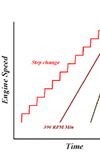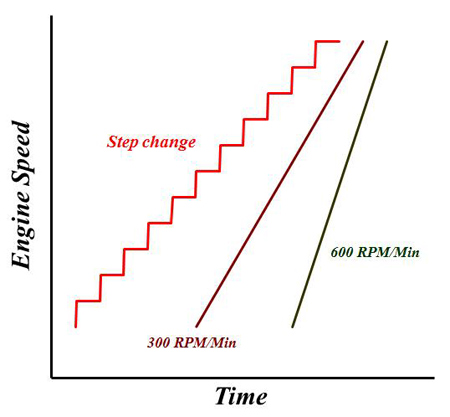The flywheel effect
 Now that kinetic energy recovery systems (KERS) are back on the agenda in Formula One and Le Mans prototypes, it's a reminder that a flywheel is not only a convenient place to attach the clutch, it can also be used to store energy. As well as electric motor/generator systems, several other KERS units have incorporated flywheels running in a vacuum.
Now that kinetic energy recovery systems (KERS) are back on the agenda in Formula One and Le Mans prototypes, it's a reminder that a flywheel is not only a convenient place to attach the clutch, it can also be used to store energy. As well as electric motor/generator systems, several other KERS units have incorporated flywheels running in a vacuum.
When the car slows down, the energy otherwise wasted as heat during braking is stored in the flywheel and released back into the driveline at the next opportunity. In an engine, however, the main purpose of the flywheel is to even out the speed fluctuations in the crankshaft. But when it comes to dyno testing, this inertia - indeed, the whole inertia of the engine - can have a significant effect on the power measured depending on the test method used.
The power produced by an engine at any particular speed is described as the rate of doing work at that speed. When dyno testing, an engine is run at a series of fixed engine speeds and the torque produced is measured at each one. Running at a constant speed and wide-open throttle, these figures should be accurate and repeatable, giving a good representation of the potential of the engine at each speed.
At a fixed, constant speed the engine can be fully optimised for best fuelling or ignition setting, and the data easily inputted into the appropriate matrices in the engine control system. Using this method, the engine can be run at a series of constant speeds and the performance curve assembled from the data of a series of constant speed points.
Competition engines, however, rarely if ever run at a constant speed. For the vehicle to accelerate, the engine power has to be greater than the load necessary (wind resistance, friction and so on) just to maintain progress and so, as the vehicle accelerates, the engine speed increases as well. This continues in each of the gears until either the engine reaches its rev limit or the road load and engine power balance each other out. Either way, the engine speed is constantly varying, and only part of the power produced is being used to accelerate the vehicle; the other part is being used to accelerate the engine itself.

An engine with a light flywheel or one with lightweight internal parts will therefore expend less of its power on accelerating the engine and more of it on accelerating the vehicle. Fitting lightweight flywheels to race or rally engines consequently not only speeds up the gear changes but can also produce a much livelier engine, which in turn can also increase (however slightly) the rate of acceleration of the vehicle.
Bearing all this in mind, performance testing 'on the fly' more accurately reflects the conditions in the car. On the plus side, engine performance curves take less time, and although the torque generated will appear to be slightly less than the constant-speed version, with competition engines having a finite life - measured in hours, not tens of thousands, as in the case of a roadcar engine - much more of the engine's life will remain for the track.
But having decided to test this way, what sort of acceleration rate should be used? Well, NASCAR use 300 rpm per second for the superspeedways and 600 rpm per second for the short tracks. The faster an engine accelerates, however, the less power is measured at the dyno. Also, the higher this rate of engine speed increase, the more difficult is the control and the greater the variability of the data produced.
And unlike constant-speed testing, reducing the mass of the flywheel should be reflected in the performance curve.
Fig. 1 - Testing on the fly
Written by John Coxon